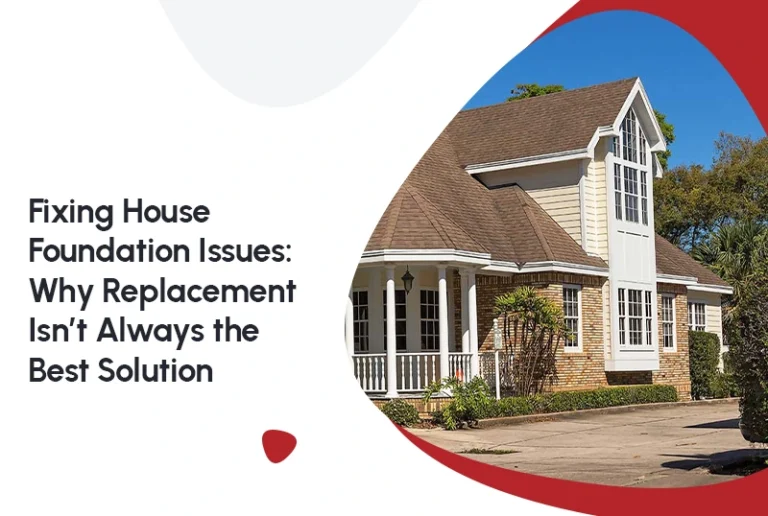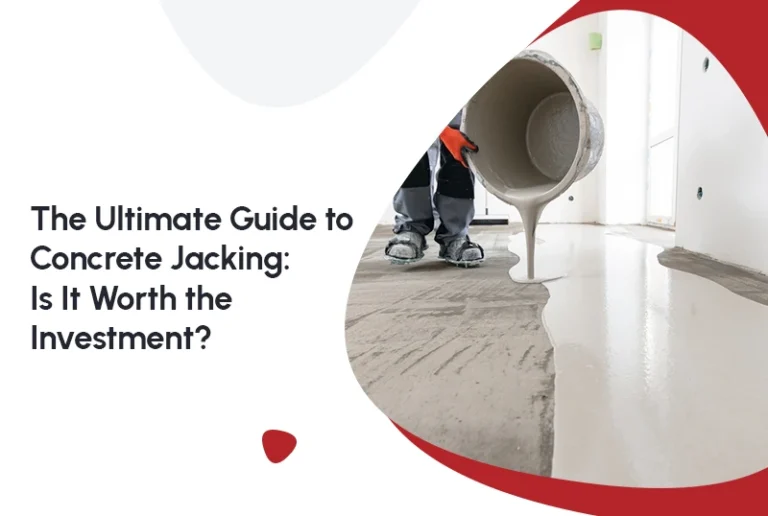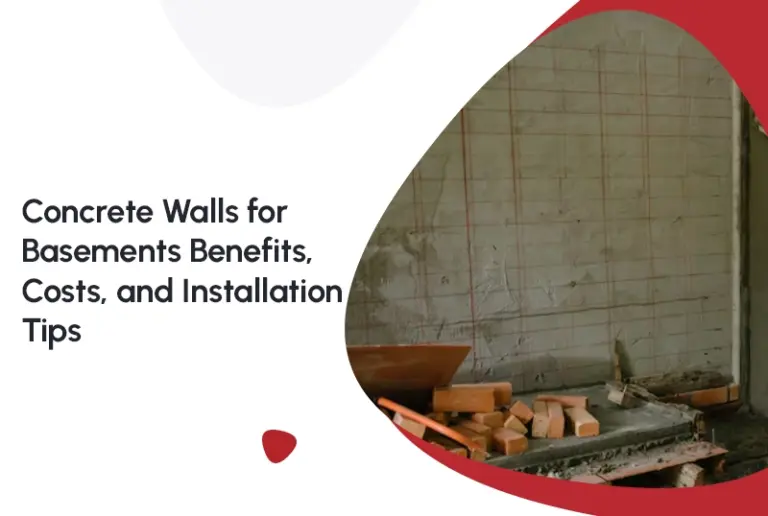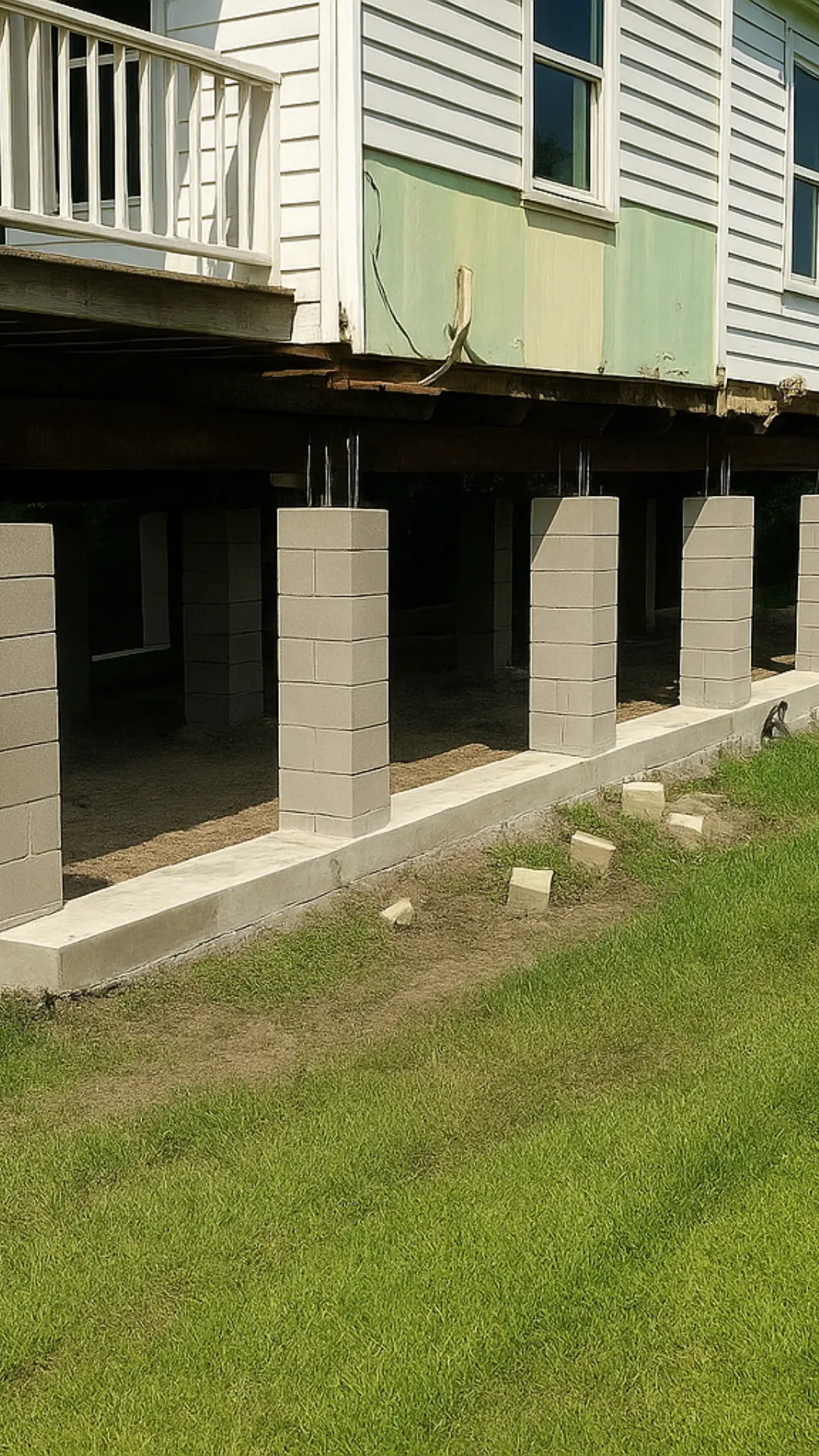Your home’s foundation is one of the most important elements of its structural integrity. It bears the weight of the entire structure, distributes loads evenly, and keeps your house stable and level. Without a strong and well-maintained foundation, even the most beautifully designed homes are at risk of serious structural issues. But how do you know when it’s time to take action?
This guide explores key warning signs that may indicate foundation issues, explains why prompt home foundation repair matter, and walks you through the risks of delaying action. Whether you have a pier & beam foundation or a concrete slab, knowing when to act can save you time, money, and a lot of stress.
Key Warning Signs for Home Foundation Repair
As a homeowner, it’s essential to be aware of the warning signs that indicate your foundation may be in trouble. Ignoring these signs can lead to more significant, costlier issues in the future. Here are the most common signs that it’s time for home foundation repair:
1. Cracks in the Walls or Ceilings
Cracks in your walls—especially diagonal ones around doors or windows—are often the first visible signs of a shifting foundation. These cracks result from your home settling unevenly as the foundation beneath it moves or deteriorates.
- Small hairline cracks are usually due to minor settling and are common in newer homes. However, they still warrant monitoring.
- Large, horizontal, or diagonal cracks, especially those that widen over time or appear suddenly, should not be ignored. These often point to structural movement.
In homes with pier & beam or slab foundations, these cracks can become more pronounced as structural movement progresses.
2. Uneven or Sagging Floors
Walking across a slanted, bouncy, or sagging floor can be frustrating—and dangerous. These signs usually indicate that parts of your foundation are settling unevenly, causing sections of the floor to dip or rise.
- pier & beam foundation often suffer from moisture-related settling in the crawl space, leading to sagging floors.
- Concrete slab foundations may crack and settle in one area due to soil erosion or shrinkage.
Aside from being a tripping hazard, uneven floors are a clear indicator of a foundation that needs assessment and possibly repair.
3. Doors and Windows That Stick
When your foundation shifts or sinks, the frame of your home becomes misaligned. This can cause doors and windows to:
- Stick when opening or closing
- Refuse to latch properly
- Have visible gaps at the top or bottom
This symptom is particularly common in pier & beam foundations, where piers may shift due to moisture or soil instability. Even if the issue seems minor now, it could be a sign of more extensive movement happening beneath your home.
4. Cracks in the Foundation
Visible cracks in your foundation wall or slab are serious red flags.
- Vertical cracks typically result from settling and may not always indicate a severe problem—but should still be monitored.
- Horizontal or stair-step cracks, however, are more serious. These can signal pressure from soil expansion, water damage, or structural failure.
If you see gaps wide enough to insert a coin—or any crack large enough to allow moisture penetration—it’s time to schedule a professional inspection for home foundation repair.
5. Water Damage in the Basement or Crawl Space
Moisture is a common catalyst for foundation problems. If you see signs of water damage, mildew, or musty odors in your basement or crawl space, you could be looking at a compromised foundation.
- Pier & beam foundations are particularly vulnerable to water damage due to the exposed nature of the crawl space.
- Concrete slab foundations can allow water to seep through surface cracks, eventually undermining the structural integrity of the entire slab.
Standing water, mold, or a damp smell are signs you need not just waterproofing but potentially structural repairs as well.
Additional Signs Worth Monitoring
Bowing or Leaning Walls
If your basement or foundation walls appear to bow inward or outward, hydrostatic pressure from surrounding soil could be causing structural stress.
Foundation Upheaval
When the foundation rises instead of sinking (common with clay soils), it can cause significant cracking and misalignment throughout the house.
Gaps Between Walls and Ceiling or Floor
If there are growing gaps where the ceiling meets the walls or the floor pulls away from the baseboards, it’s a signal that your foundation is shifting.
Why Prompt Home Foundation Repair is Important
Ignoring foundation problems can lead to serious, costly damage to your home. Delaying home foundation repair might result in the need for more extensive work, including replacing the foundation or structural components. Here’s why it’s crucial to address foundation issues as soon as you notice the signs:
1. Preserving Structural Integrity
The foundation is the base upon which your home sits. When it weakens, it affects every other part of the structure. Early home foundation repair help prevent domino effects like:
- Wall separation
- Roof misalignment
- Plumbing damage from pipe separation
- Drywall cracking and warping
Addressing the issue promptly ensures your home remains safe and structurally sound.
2. Preventing Moisture Damage
Cracks and foundation shifts create entry points for water, which leads to:
- Mold and mildew growth
- Wood rot (especially in pier & beam homes)
- Termite infestations
Water damage not only affects indoor air quality but accelerates the rate of structural deterioration. Home foundation repair often includes waterproofing strategies that resolve the root cause.
3. Saving Money on Future Repairs
Home foundation repair is often more affordable when the problem is caught early. Minor lifting, pier replacement, or crack injections cost significantly less than complete structural reinforcement or foundation replacement.
Plus, unaddressed problems can damage:
- Flooring (warping or cracking)
- Cabinets and countertops (becoming uneven)
- Plumbing and HVAC systems
Treating these secondary issues only adds to your expenses.
4. Maintaining or Increasing Property Value
If you plan to sell your home, a damaged foundation can be a dealbreaker. Most buyers will walk away from a property that requires major structural repair—or they’ll demand a substantial price reduction.
Taking care of home foundation repairs and problems preserves your home’s resale value and ensures it passes inspection with flying colors.
Foundation Repair Methods Based on Foundation Type
For Pier & Beam Foundations:
- Pier Replacement: Replacing old or damaged wooden or concrete piers
- Shimming: Adding or adjusting shims between beams and piers to level the floor
- Drainage Correction: Installing or improving drainage systems to prevent crawl space moisture
For Concrete Slab Foundations:
- Slab Jacking: Lifting sunken portions of the foundation using injected grout
- Underpinning: Installing piers beneath the slab to stabilize shifting sections
- Crack Repair: Sealing cracks using epoxy or polyurethane foam
The right method depends on the nature and extent of the issue, as well as your soil conditions.
How to Prevent Foundation Damage
While not all foundation issues can be prevented, regular maintenance greatly reduces risk. Here’s how:
- Ensure Proper Drainage: Keep gutters and downspouts clean, and make sure water drains away from the foundation.
- Install Moisture Barriers: For pier & beam homes, install vapor barriers in crawl spaces.
- Avoid Overwatering Landscaping: Excess water can swell the soil and push against your foundation.
- Schedule Regular Inspections: Especially after extreme weather events or if you live in a high-moisture region.
Conclusion
Recognizing the warning signs of foundation issues and acting quickly can protect your biggest investment—your home. From cracks and uneven floors to water damage and sagging structures, these symptoms shouldn’t be ignored.
Whether your home requires concrete slab foundation repair, or a more comprehensive solution, addressing the problem promptly will help protect your investment. Maintaining a solid foundation ensures your home stays safe, stable, and valuable.
If you’re noticing any of these signs, don’t wait. Consult a licensed foundation repair professional for an inspection and take the first step toward restoring your home’s structural health.
FAQs
1. Can a home foundation be repaired?
Yes, a home foundation can almost always be repaired using modern techniques. The right solution depends on the type and severity of the damage. Minor cracks can often be sealed with epoxy or polyurethane injections, while serious settling or sinking may require piering or underpinning. Structural issues such as bowing walls can be fixed with steel braces or wall anchors. Early detection and professional assessment ensure long-term stability and can save homeowners thousands in future repairs.
2. Is home foundation repair worth it?
Yes,home foundation repair is almost always worth it. Ignoring foundation problems can lead to much larger issues such as wall cracks, uneven floors, roof stress, and plumbing damage. A strong, stable foundation also maintains or increases property value—especially important if you plan to sell your home. Foundation repair isn’t just a fix—it’s an investment in your home’s safety, structural integrity, and long-term resale potential.
3. When to worry about foundation problems?
You should start worrying about home foundation repair problems when you notice warning signs such as cracks wider than ¼ inch, doors and windows that stick, sloping floors, or gaps around window frames and baseboards. Water pooling near the foundation and visible bowing walls are also red flags. Catching these signs early and consulting a foundation expert can prevent minor settling from turning into a major structural concern.
4. How do you repair a damaged foundation?
Repairing a damaged foundation depends on the cause. For surface cracks, professionals use epoxy or polyurethane injections to seal and strengthen the area. For sinking or shifting foundations, pier systems—such as steel push piers or helical piers—are installed to stabilize and lift the foundation. In cases of water damage, drainage correction and waterproofing are added to prevent future deterioration. Each repair plan is customized based on soil conditions and damage severity.
5. Can I fix foundation issues myself?
Small, cosmetic cracks in concrete can often be repaired by homeowners using DIY crack repair kits. However, structural foundation problems—like major settling, bowing, or water infiltration—require professional attention. Attempting a complex repair without proper tools or expertise can worsen the problem. It’s always best to get an expert inspection before attempting any repairs to ensure the right method is used.
6. What is the best home foundation repair method?
The best home foundation repair method depends on the soil type, structure design, and extent of damage:
- Steel piers are ideal for deep stabilization and long-term durability.
- Helical piers work best for lighter homes or when soil conditions are unstable.
- Slabjacking or mudjacking is a cost-effective solution for lifting sunken concrete slabs.
- Wall anchors or carbon fiber straps are used to fix bowing basement walls.
A professional inspection helps determine the most effective method for your specific situation.
7. What type of home foundation repair is most expensive?
The most expensive type of home foundation repair is underpinning with steel piers or helical piles, which can cost between $10,000 and $30,000 depending on the home size and number of piers needed. This method involves driving deep supports into the ground to stabilize or lift the foundation. While costly, it’s often the only long-term solution for severe foundation settling or shifting caused by soil movement.
8. What is the cheapest way to repair a foundation?
The cheapest way to repair a foundation is to fix small cracks early before they worsen. Epoxy or polyurethane injection kits for minor cracks can cost as little as $300 to $800. For slightly uneven foundations, slabjacking (injecting material under the slab to lift it) is a budget-friendly option. However, the cheapest fix isn’t always the best—long-term solutions like piering may cost more upfront but save thousands in future damage.
9. How much does it cost to repair a cracked foundation?
Repairing a cracked foundation typically costs between $500 and $10,000, depending on the type and severity of the crack. Hairline cracks from normal settling can be sealed for a few hundred dollars, while structural cracks caused by soil movement or water pressure may require reinforcement or piering. Factors such as home size, accessibility, and soil condition also influence the final price.
10. What is the most foundation repair can cost?
The cost of major foundation repair can reach up to $40,000 or more for large homes with severe structural damage. This usually includes extensive underpinning, excavation, and full waterproofing systems. While that number can sound high, the average homeowner typically spends between $3,000 and $10,000 for standard foundation repairs. Investing early in inspection and maintenance helps avoid these extreme repair costs later on.







